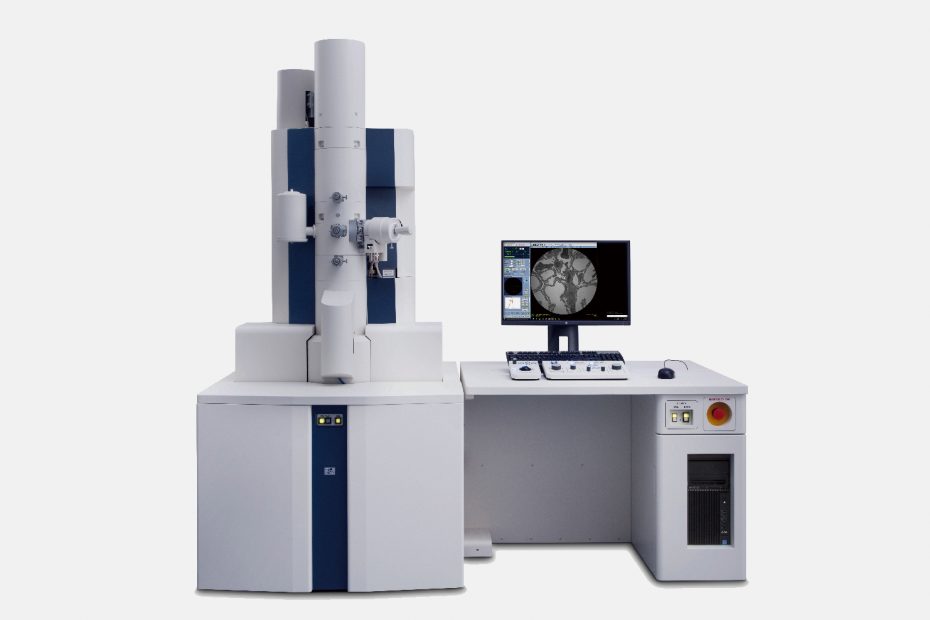Transmission electron microscopy is already a commonly used research tool in the fields of materials science, condensed matter physics, biology and chemistry. Its biggest advantage is that it has a nanometer-level or even higher resolution. The structure and chemical composition of matter can be detected at the atomic scale, and the relationship between the internal microstructure of the change of matter and various macroscopic properties can be revealed.
Resolution is the basic performance judgment index of a scanning electron microscope (SEM). Spherical aberration is a kind of aberration and is one of the main reasons affecting the resolution of TEM. The other three main aberrations are astigmatism, coma, and chromatic aberration.

Due to the existence of aberrations, no matter whether it is an optical lens or an electromagnetic lens, its lens system cannot be absolutely perfect.
What is ball aberration?
In optical lenses, the combination of convex lenses and concave lenses can be used to reduce the shortcomings of all the light (electrons) that cannot be converted to a focal point caused by the strong converging ability of the convex lens at the edge and the weak converging ability of the center. For electromagnetic lenses, we do not have concave lenses. Spherical aberration has become the most important and most difficult problem affecting TEM resolution.
A TEM contains multiple magnetic lenses: condenser, objective, intermediate and projection mirrors, etc. Spherical aberration is caused by the poor construction of the magnetic mirrors, and these magnetic mirror groups will have spherical aberration.
When we correct different magnetic lenses, there are different kinds of ACTEM. When we use the STEM mode, the condenser condenses the electron beam to scan the sample for imaging. At this time, the spherical aberration of the condenser is the main reason affecting the resolution.
Therefore, for STEM-based TEMs, the spherical aberration correction device will be installed at the position of the condenser, that is, AC-STEM.
When we use the image mode, the main factor that affects the imaging resolution is the spherical aberration of the objective lens. The corrector installed at the objective lens is called AC-TEM.
Of course, there are also two correctors installed on one TEM, which is the so-called double spherical aberration corrected TEM.
The spherical aberration electron microscope is equipped with an objective lens corrector or a condenser lens corrector, which eliminates the spherical aberration existing in some lens systems and improves the resolution of the transmission electron microscope to the sub-angstrom level.
It can work in two modes, namely “TEM mode” and “STEM mode”. Under TEM, it is more to observe the morphology. In STEM mode, it can do EDS and EELS component line scanning and mapping.
Principle of Spherical Aberration Electron Microscopy
Atomic resolution double spherical aberration transmission electron microscope, like other transmission electron microscopes, is an electron optical instrument that emits electrons as a light source, uses electromagnetic lenses to converge the electron beams and focuses on the incident electrons penetrating the sample, and obtains the structural information of the sample. It has the functions of crystal structure and phase determination and chemical composition analysis.
Advantages and main functions of spherical aberration electron microscope
Compared with traditional TEM, since AC-TEM effectively reduces aberrations, the resolution of AC-TEM is significantly improved. The resolution of traditional TEM and STEM is at the nanometer and sub-nanometer levels, while the resolution of AC-TEM and AC-STEM can reach the angstrom and sub-angstrom levels! Increased resolution means finer and more accurate structural characterization of materials.
- Equipped with objective lens spherical aberration corrector: It significantly improves the resolution of TEM, and can realize ultra-high resolution transmission observation (80pm), and can carry out related research on the atomic structure of materials such as surfaces, interfaces, and defects through direct atomic image characterization.
- Equipped with a spherical aberration corrector for the condenser: it significantly improves the resolution of the STEM and can achieve ultra-high resolution scanning transmission observation (82pm), which can be achieved through the annular bright field (ABF), annular dark field (ADF) and high-angle annular dark field Field (HAADF) to study the distribution and occupancy of light and heavy atoms in materials, and combined with X-ray energy spectroscopy to obtain the composition distribution of materials at atomic resolution.
- Equipped with ultra-high-sensitivity X-ray energy spectroscopy (multi-probe windowless energy spectroscopy): it can detect elements above B and obtain the composition distribution at atomic resolution. The content of trace elements can be characterized as low as 0.1at.%. 3D compositional reconstruction of spectra.
- Equipped with CMOS digital camera system: large field of view 4K×4K; the fast reading speed of 25fps, smooth shooting, and video recording; the large dynamic range of 16bit, which can directly shoot electronic diffraction patterns.
Spherical aberration electron microscope technical indicators
- Acceleration voltage: up to 300kv
- TEM point resolution: 80pm
- STEM resolution: 82pm
- Sample chamber vacuum: < 1 x 10-5 Pa, electron gun vacuum: < 1 x 10-6 Pa
- TEM magnification: 50-1,500,000 times; STEM maximum magnification: ≥100,000,000 times
- Photo mode: CMOS camera has a 4k x 4k pixel size, which can collect large-area images, and then digitally zoom in to obtain high-magnification images of specific positions. The large dynamic range can meet the requirements of shooting diffraction patterns and high reading speed Also suitable for shooting dynamic video, installation position: bottom installation, reading speed: 25fps @4kx4k, 100fps @2kx2k, 200fps @1kx1k, 300fps @512×512
Spherical aberration electron microscope test sample requirements
- Non-magnetic general TEM samples
- Discs with a diameter of less than 3mm and a thin area thickness of no more than 100nm
- Samples prepared by FIB
- Powder sample dispersed on a copper grid
- Other TEM samples (special sample rods)
